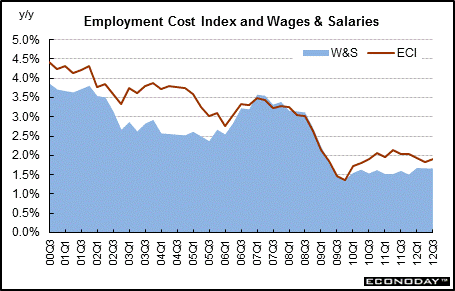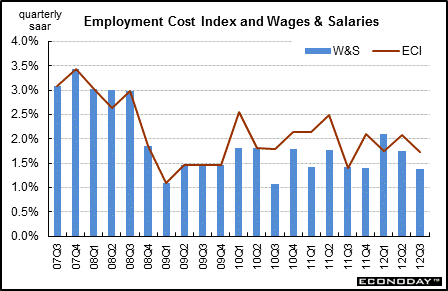 |

Federal Reserve officials closely monitor the employment cost index, which measures total compensation costs. Compensation includes wages & salaries as well as benefits. Compensation costs moderated sharply in 2002, then again in the first half of 2005 after remaining stable in the two previous years. Both wages & salaries and benefits rose notably in 2006 and remained elevated during 2007 but eased during 2008 and through 2009 due to a soft labor market but also due to employers passing more medical benefits costs on to workers. Employment costs began to nudge up in 2010 and early 2011 and then eased somewhat in 2012 on a year-ago basis.

Compensation inflation has firmed following an easing period. In 2006 and 2007, tight labor markets had resulted in faster gains in wages and salaries. High compensation costs had been a concern for Fed officials during 2006, 2007, and even early 2008. However, the jump in unemployment and loss of payroll jobs in 2008 and 2009 softened compensation inflation. But due to a boost in benefits inflation, compensation rates were on an uptrend in 2010 but steadied in 2011 and into 2012 if quarterly volatility is averaged.
Recently, the employment cost index in the third quarter of 2012 nudged up to 1.9 percent on a year-ago basis from 1.8 percent the prior quarter. Wages and salaries were up 1.7 percent—matching the second quarter pace. On a marginal basis, costs eased in the third quarter. On a quarterly annualized basis, employment cost inflation slowed to 1.7 percent, following a 2.1 percent rise in the second quarter. Wages & salaries eased to 1.4 percent from 1.7 percent.



Production & Sales •
Inflation •
Federal Reserve Policy •
Interest Rates
|
 |